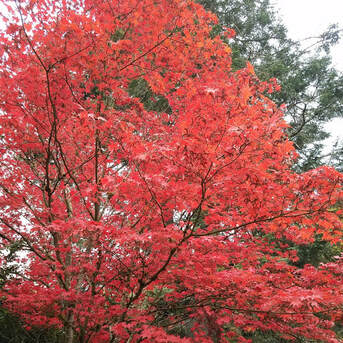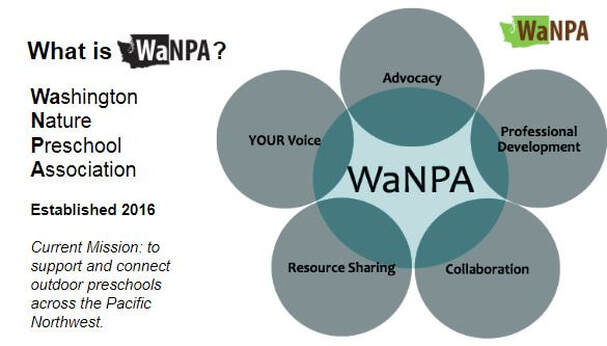 Happy Halloween! Did you know that there are many theories as to why the term ‘jack-o-lantern’ is used for our carved pumpkins at Halloween, but no one really knows exactly how the connection was made between some random fellow in England holding a lantern (Jack of the lantern) and a carved root vegetable in Ireland intended to frighten off spirits of ill will (gourds came later, when Europeans colonized North America*). The connection remains a mystery. Something that is not mysterious is the connection between enjoying a wonderful fall and being involved in nature-based early childhood education. This is a terrific time of year to be outside with children! Really, when isn’t?!  Fall in the northwest provides a plethora of spiders and webs of all varieties, mud of all consistencies, slug and millipede discoveries, PUDDLES, and so much more. We get to observe what may be the most gorgeous side of decomposition, as deciduous trees draw into themselves all that CO2-transforming chlorophyll, pulling the nutrients deep into their roots for later use, and let go of what they no longer need in a brilliant burst of color. Can you tell I love it? There is something about this waning time in nature that energizes me, and I’m not the only one. The sound of joyful engagement can be heard at any outdoor school across the region. In fact, moving our bodies to stay warm outside means, unlike the trees, we have to get even more active this time of year. At Washington Nature Preschool Association, we’re getting more active too. Among many other things, we’ve been working on ways to build year-round connections between members, both virtually and in person. Through formalizing our membership, we hope to engage members who are in neighboring programs on a more regular basis (meet-ups/site visits/round-table discussions), and we hope to benefit from the knowledge, skills, and experience of our members in achieving organizational goals. As an all-volunteer collaborative, we truly value member participation. It is through our connections to one another and mutual support that we will be best equipped to provide high-quality early childhood education and the greatest possible environment for children to grow.  For the past four years, the WaNPA Annual Symposium has offered an incredible opportunity for people involved with nature preschools to connect in useful discussions about the topics that are important to us all. At this year’s symposium, from the panel discussion topic, Adapting Nature Preschool in an Era of Climate Change, to the breakout sessions (listed below), we began some meaningful and relevant conversations, but one day is not enough to cover topics that are constantly evolving. We want to support the continuation of these discussions and the sharing of resources regarding topics such as these:
Become a member! (it’s free) *EDIT 11/4: As I drifted off to sleep last night, the words "new world" popped into my mind. There was something off about them; something not right. When I first wrote this post, I used that phrase because I was thinking about the European tradition of the jack-o-lantern; I was thinking about how the North American continent was "the new world" to those who had previously only been aware of Europe, Africa, and Asia. This morning, I woke with clarity. The problem with that phrase is that it perpetuates the colonizer's story as the dominant story (the only history). So, that's why I changed it. I almost changed it without saying anything, because I was embarrassed by my thoughtlessness and ignorance, but I'm a teacher and this is a teachable moment: I made a mistake, realized it, and amended it. This is what we have an opportunity to model for children. We do not have to be the perfect, authoritarian teacher with all the answers, an adult to be revered and never questioned; nope, we get to model being human and doing our best to be better. Nature shows us that it's normal to be imperfect.
1 Comment
|

 RSS Feed
RSS Feed
